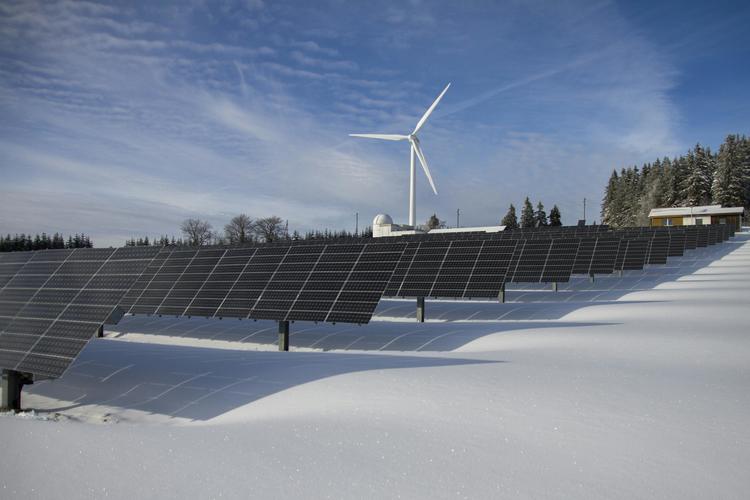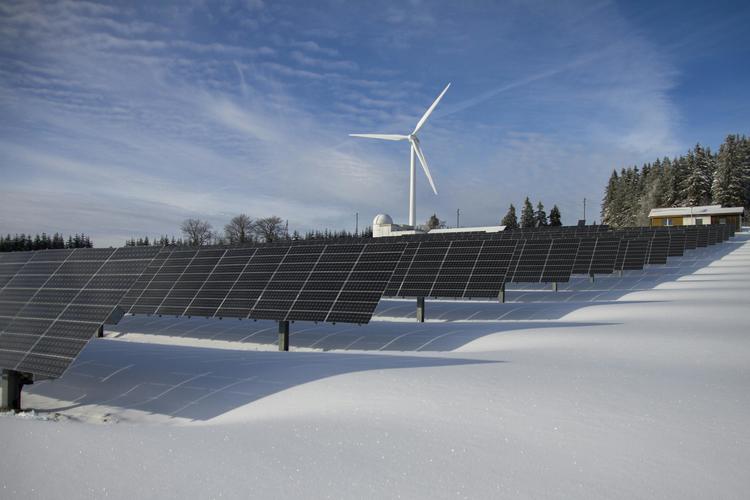Ann Arbor (Informed Comment) – It may be that Trump can slow the advance of renewables, including solar energy, in the United States. That would be a shame for the US, because consumers will have to pay more for electricity, the grid will be dirtier, and the country will fall farther behind China in the race to dominate solar panel sales. Currently China has cornered the market, producing 80% of panels globally.
Trump cannot, however, stand in the way of the growth of solar world-wide. Let me explain why.
The energy analysis company Ember has just issued a new report that finds that low-carbon sources of energy now provide 41% of global electricity. Moreover, solar energy in particular grew by 29% in 2024, the highest in six years.
Solar is doubling every three years, which constitutes exponential growth, and it is now at 2,000 terrawatt hours, a milestone it reached faster than any energy-producing technology in human history.
Moreover, global battery capacity doubled in 2024, allowing the storage of daytime solar generation for use at night.
Ember’s is a global view, but it is worth mentioning that California saw many days in 2024 when all its electricity came from wind, water, solar and battery, and that this combination proved robust. There were no blackouts as a result, and electricity prices fell. California’s relatively high electricity costs are not because of renewables but because of the cost of wildfire mitigation, the cost of natural gas, and other factors having nothing to do with green electricity.
Ember says that if you dedicated all the solar energy generated in the world last year to India, it would have been able to supply that country with all its electricity.
Solar is reducing the use of coal and gas, and especially in China, where the growth in coal production and use would have been 50% higher in recent years if it had not been for the big build-out in solar power.
Ember is making me appreciate the absolute marvel of solar energy. Its authors point out that the amount of solar installed globally in 2024 exceeded “the annual capacity installations of all fuels combined in any year before 2023.” New installations came to 584 gigawatts in 2024, about a third more than the previous year and twice that of 2022.
The 38-member Organization for Economic Cooperation and Development (OECD) comprises most of Europe and North America, usually leads in technology. But in this case, non-OECD countries accounted for 59% of new solar installations, with 39% of that in China alone.
Ember doesn’t say so, but Pakistan alone put in 22 gigawatts in new solar last year, which is more than Canada has in total. This was largely done by villagers tired of waiting for the government to provide them with affordable and regular electricity. They were helped by particularly inexpensive Chinese solar panels last year, the result of overproduction. Solar energy is becoming a global juggernaut, not dependent for its advances solely on the advanced European and North American economies.
Photo by Pixabay: https://www.pexels.com/photo/solar-panels-on-snow-with-windmill-under-clear-day-sky-433308/
In China, solar provided 8.3% of the country’s electricity, and for the first time made up the majority of new power installations.
Chile, Brazil, and India also made enormous strides. Three of the five biggest solar generators in the world were members of the BRICS bloc.
The Middle East and Africa saw imports of solar panels, mostly from China, triple in just two years.
So even as it is, solar installations are growing by leaps and bounds, doubling every three years worldwide. Trump can be a drag on this progress, but he cannot halt or even appreciably slow it.
World electricity use is roughly 27,000 terawatt hours.
In three years, in 2028, solar will account for 4,000 terawatt hours, if current trends continue.
In 2031 it will be 8,000 kilowatt hours.
In 2034 it will be 16,000 kilowatt hours
In 2037 it will be 32,000 kilowatt hours, more than our current global supply. Of course demand will rise in the meantime. So let’s do one more.
In 2040 it will be 64,000 kilowatt hours, likely all the electricity used in the world at that time
In order for solar to fuel the entire world, of course, we also need to build out battery capacity and redo the electricity transmission system, and we have to electrify transport.
Mind you, this progression depends on current technology. But the technology is itself rapidly advancing. If we get cheap, stable, efficient perovskite solar panels, the process will be even quicker and more affordable.
A Chinese and French team of scientists just published a paper in Nature Communications reporting that they had had great success in stabilizing perovskites with an admixture of pyrrodiazole. If their discovery holds up and can be brought to market, it will quickly transform the world. Perovskites are cheaper and more flexible than silicon panels, and potentially more efficient, as well. Perovskites don’t care about Donald Trump.




 © 2025 All Rights Reserved
© 2025 All Rights Reserved